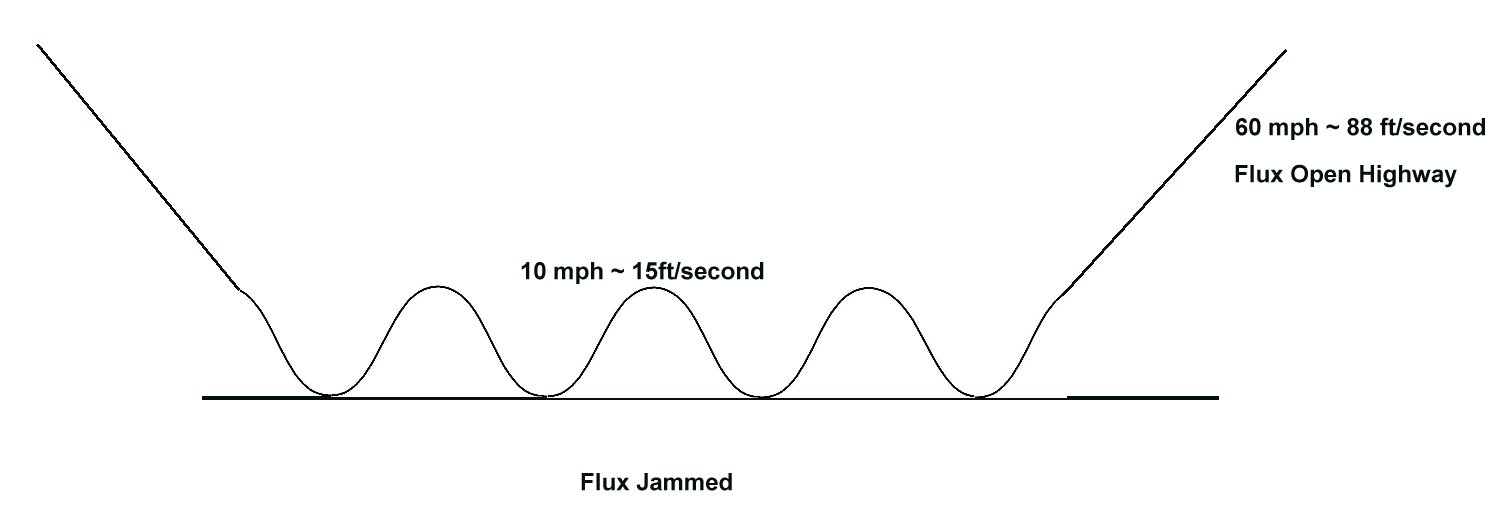I always wondered why a freeway with no accidents or other driver diversions such as a policeman pulling over a speeder can come to an almost complete halt. I think if have figured out this mystery. The following graph is velocity versus distance on a freeway. Here in Phoenix there is a location on the freeway where you can be driving at a normal highway rate and then encounter a traffic jam. Once through the 4 miles of the traffic jam the freeway opens up again to acceptable conditions.

Note the oscillatory behavior in the jammed area where cars alternate between a maximum low speed and complete stop.
If we make the simplifying assumption that

Then we can say


Some example numbers are

Using the 2 second driving rule 


Which is close enough to claim agreement.
My strategy in a traffic jam is to not follow the car in front very closely. I leave alot of space in an effort to recreate the conditions that result in 60 mph driving!
An interesting observation. The two second rule would give a spacing of 32 feet at 10 mph in a traffic jam. My observation is that the cars are packed tighter than 30 feet and thus causing the conditions that set up the braking wave. People are driving too close to one another and it is bound to result in the driver being forced to throw on the brakes. In Normal 60 mph driving following another car with a 2 second lead its very rare that you need to throw on the brakes. Going the other direction if you drive 60mph and only leave a 1 second lead you're much more likely to end up needing to throw on the breaks.
0 Comments